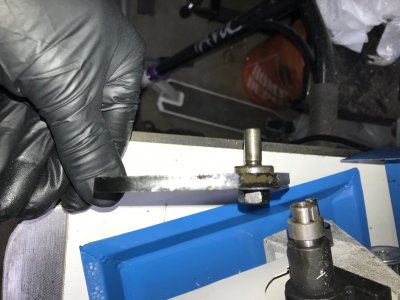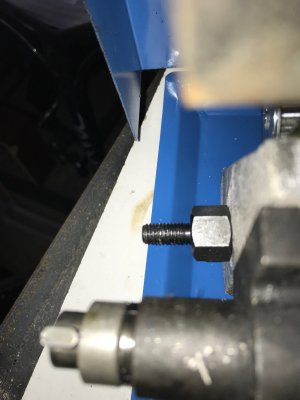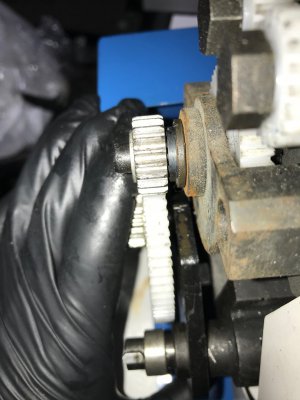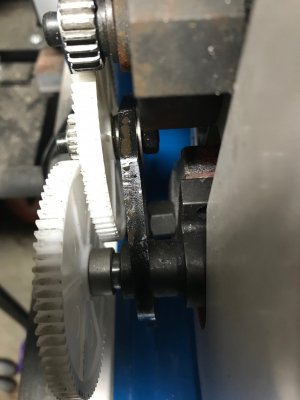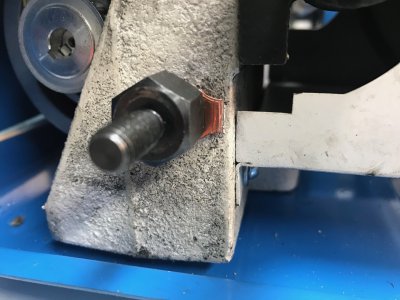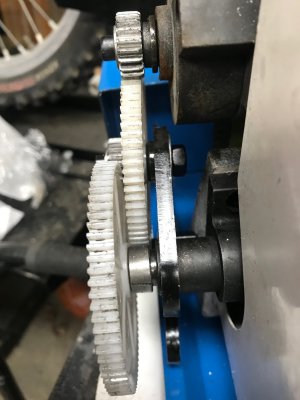- Joined
- Oct 16, 2019
- Messages
- 6,576
Ok folks here's my lathe.
Overall it looks pretty good. It's very smooth and quiet when running. Power feed works well, Half nuts engage and disengage positively.
In the crate there was a loose allen bolt 1/2" long. No idea where it's from at this point.
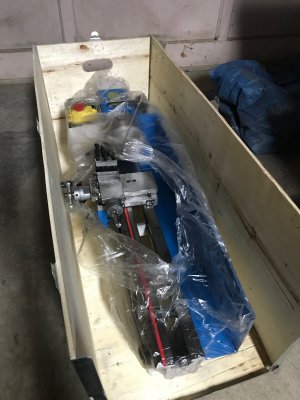
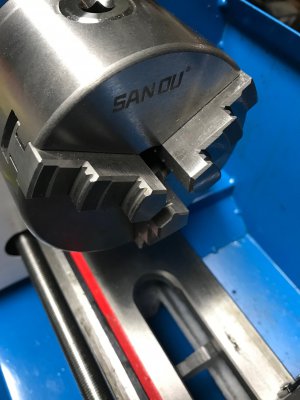
Is this typical for the crossslide crank to not have a zero ring? (I have no idea what it's actually called but the ring that rotates to mark zero so you can tell how much you're advancing the slide)
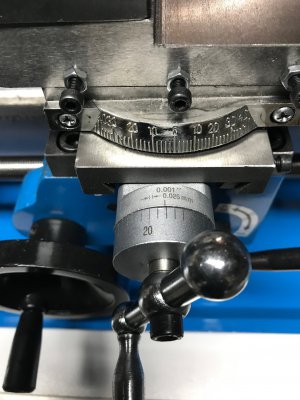
I noticed an oil port on the chuck which seems a good idea.
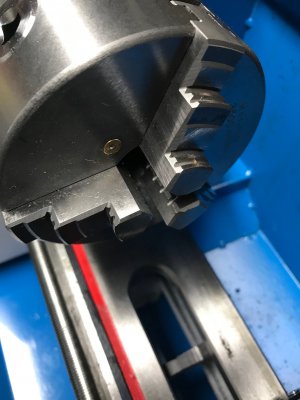
There a casting flaw on the bed but I don't think it will affect anything. Overall the machining on the ways is quite good. Tailstock slides very smoothly. Gibs on the crossslide and compound need some attention.
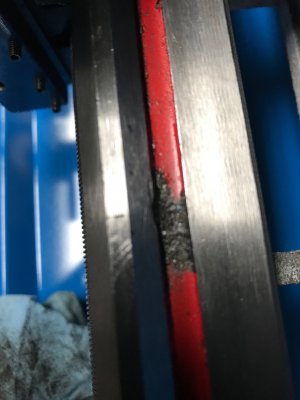
The detent for the forward/reverse is slightly off such that when in neutral, the top plastic gear makes slight contact with the spindle gear. Actually the contact is intermittent so I think the spindle gear is actually not quite round. Hmmm....
The only other thing I noticed when running it is that the arm at the bottom of the gear box is misaligned causing the gears to run slightly askew. I think the nut at the bottom is too thick.
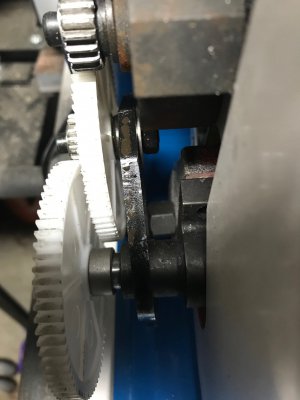
Overall it looks pretty good. It's very smooth and quiet when running. Power feed works well, Half nuts engage and disengage positively.
In the crate there was a loose allen bolt 1/2" long. No idea where it's from at this point.


Is this typical for the crossslide crank to not have a zero ring? (I have no idea what it's actually called but the ring that rotates to mark zero so you can tell how much you're advancing the slide)

I noticed an oil port on the chuck which seems a good idea.

There a casting flaw on the bed but I don't think it will affect anything. Overall the machining on the ways is quite good. Tailstock slides very smoothly. Gibs on the crossslide and compound need some attention.

The detent for the forward/reverse is slightly off such that when in neutral, the top plastic gear makes slight contact with the spindle gear. Actually the contact is intermittent so I think the spindle gear is actually not quite round. Hmmm....
The only other thing I noticed when running it is that the arm at the bottom of the gear box is misaligned causing the gears to run slightly askew. I think the nut at the bottom is too thick.



